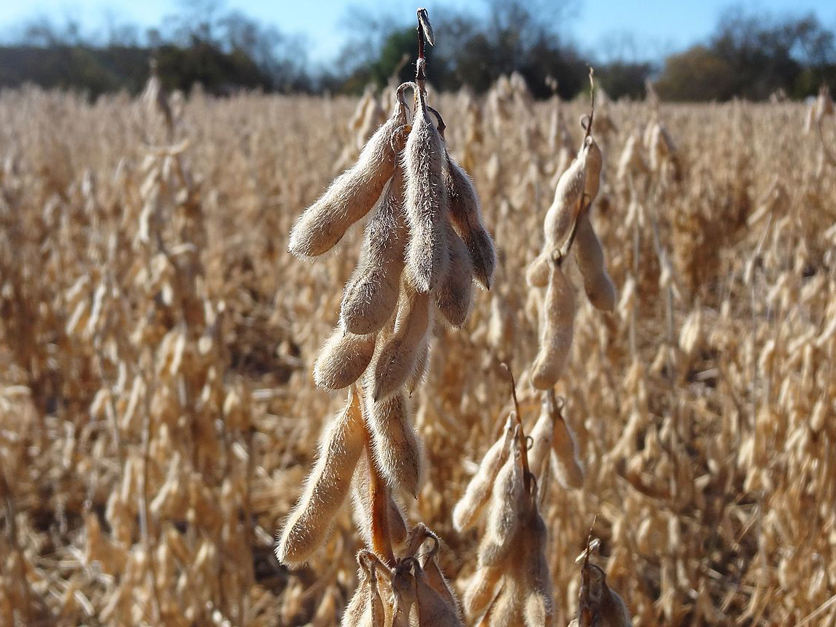Farmers were hoping for a speedy resolution to the U.S.-China trade war, but the lack of such a resolution has sent them scrambling to come up with a new home for exports once gobbled up by China.
China, once the top export destination for U.S. soybeans, has ticked up its purchases in recent weeks, but is still nowhere near the levels the country once purchased from U.S. farmers.
“In the meantime, we’re going to continue our efforts marketing U.S. soy to countries around the world,” U.S. Soybean Export Council CEO Jim Sutter told Agri-Pulse. “We’re not sitting back and just waiting for the China situation to be resolved.”
Ag Secretary Sonny Perdue told American soybean farmers they needed to diversify their export sales to minimize the impacts of the trade war — most notably a crippling 25% tariff that has since gone up to 30%. Farmers took heed and, led by the efforts of groups like the USSEC, they’ve pushed hard to branch out, increasing exports to countries like Spain, the U.K., Egypt, Mexico and even Argentina.
“We’ve done everything we can — USSEC has done everything it can in other places in the world,” John Baize, an analyst for USSEC, said.
The U.S. sold an additional 67 million bushels of soybeans to Spain and 63 million bushels to Argentina in the 2018-19 marketing year, according to data compiled by the American Farm Bureau Federation. Egypt bought about 14 million bushels more than it did the previous year, and U.S. sales to Mexico increased by about 16 million bushels. Japan, the U.K., Italy, Saudi Arabia, Canada and South Korea also bought more. But it wasn’t enough to make up for the roughly 530 million bushels of lost sales to China in 2018-19.

Jim Sutter, USSEC
Overall, the U.S. exported about 1.7 billion bushels of soybeans in 2018-19, down from 2.1 billion bushels the previous year, according to USDA data.
But it wasn’t just China that saw decreases; Turkey was one of the biggest disappointments, Baize said. Soybean exports to the country dropped by about 17 million bushels, and much of that was due to factors out of U.S. farmers' control.
“We have new biotech events that haven’t been approved there," Baize said. "Turkish companies are scared to import any U.S. soybeans.”
It’s not just a matter of losing money if Turkish officials were to confiscate the soybeans, Baize said, but the Turkish government threatens prison sentences for bringing in unapproved biotech events.
Pakistan is another country where U.S. soybean sales have slipped. U.S. exports there dropped by 19 million bushels in 2018-19, but it’s unclear why.
“Quite honestly, we can’t figure it out,” said Baize who noted that the country has been buying South American soybeans at times when U.S. soybeans were cheaper. “We just don’t quite get it.”
There are other countries like Vietnam, the Philippines and Cambodia where U.S. exports have also faltered, but much of that is due to falling demand. African swine fever has hit those countries — and China as well, forcing them to kill off pigs to try to arrest the spread of the virus.
“AFS is cutting into global demand,” Baize said. “There’s no doubt about it.”
The U.S. may have a real shot at getting China’s soybean market back if the trade war ends, but that market is smaller now, thanks to ASF. China imported about 94 million metric tons of soybeans in 2017-18, but that dropped to just 83 million in 2018-19.

John Baize, USSEC
If a deal can be reached soon, the U.S. will be in good shape to recapture much of China’s soybean market share that it lost over the past year, Baize said. Brazil is suffering planting delays and that could provide a major opportunity for U.S. exporters this year, but only if China agrees to lift its tariffs.
“The longer (Brazilian farmers) delay planting, the longer they delay exporting, which lengthens the time when we’re going to be the most competitive,” he said. “If we get this China thing fixed, we’re going to be in pretty good shape.”
That’s far from certain, but American Farm Bureau Federation President Zippy Duvall told Agri-Pulse that he’s optimistic.
Even if negotiators can’t agree on a comprehensive deal with China, then perhaps they can reach a smaller, more limited agreement that deals with agriculture, much like what the U.S. and Japan have settled on.
President Donald Trump said Monday he would prefer to make a comprehensive deal with China instead of smaller piecemeal pacts, but he didn’t rule that approach out as he has done before.
“We’ll see what they put on the table and anything is possible,” National Economic Council Director Larry Kudlow told reporters Monday.
For more news, go to www.Agri-Pulse.com.


